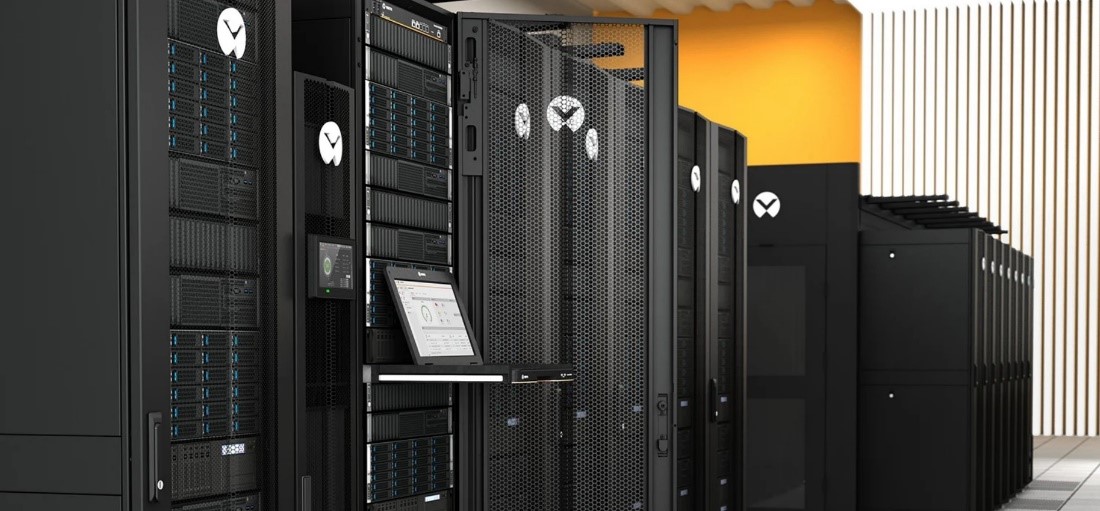Why the Right Rack Matters
When it comes to selecting the right rack for your data center, you have options – perhaps too many options – which can create confusion and frustration among your team. How do you break it down when searching for the best rack system for your facility? Let’s explore why the right rack matters and how it can make all the difference for your mission-critical needs.
What Is the Best Type of Server Rack?
As a data center operator, we know you are looking for IT infrastructure that is reliable, flexible, secure, and operationally economical. When designing your server racks, it’s essential to consider products that deliver protection and secure access to your critical IT systems. On the other hand, it’s also important to accommodate for growth and expansion while remaining cost-effective. When you partner with us, you can have both.
There are many variables to consider when setting up your racks. Let’s explore some of the rack options to house your IT infrastructure.
Preconfigured vs. Customized Server Racks
Pre-configured racks are factory-assembled and deployed quickly and easily. They are often the less expensive option, compared to customized server racks.
Customized racks are made-to-order, specially configured to support your unique circumstances. This option, while more expensive, is a great avenue for companies requiring non-traditional width, height, or depth dimensions for their server racks. If you go this route, consider specialized applications such as water and dust-proofing or shock resistance.
Open Racks vs. Enclosed Racks
An open frame server rack offers an open-concept style and is often referred to as a 4-post. They are typically nestled inside secure server rooms. Open server racks have more space and flexibility and allow cable accessibility usually from the top. These racks do not necessarily have more space than an enclosed rack, just no walls containing the interior.
Enclosed racks, as the name suggests, have four walls. They’re also called cabinets and can be locked or unlocked. Enclosed racks provide easier security and more cohesive aesthetics, as the cables will be easier to hide from plain view. This may be a better option if the server rack will be placed outside a secure server room or in a nonsecure location. Although it’s enclosed, rest assured that an enclosed rack will still facilitate proper airflow in a cold aisle, hot aisle configuration.
Which server rack style is better? It just depends on the dimensions and configuration of your data center’s equipment and layout.
2-Post Racks vs. 4-Post Racks
The two most common types of data center racks are 2-post and 4-post racks.
A 2-post rack has two vertical support beams, and is best for IT equipment that is lighter, weight-wise. These smaller racks are great space savers and are also considerably cheaper than their larger counterparts, the 4-post racks.
A 4-post rack has four support beams, one on each corner, rather than just two center beams. As a result, 4-post racks are capable of holding heavier equipment. Being larger in size means a 4-post rack is also better equipped at housing and protecting cables, which means less likelihood of system damages from everyday shuffling and wear-and-tear.
Size Matters: Consider Your Server Rack’s Height, Width, and Depth
Poor organization takes time to fix, and time is money, right? Read on to learn Vertiv’s top suggestions when considering your server rack’s dimensions and other key factors.
Server racks are the backbone of a good physical infrastructure design that lets your business take full advantage of your IT systems and capacity. The right rack helps to optimize floor space and energy efficiency while ensuring the physical protection and security of the sensitive IT systems inside.
First and foremost, one must understand the IT storage space and the server rack dimensions. This includes three sets of measurements: server rack height, server rack width, and server rack depth.
The data center industry has standardized these three measurements to help ensure that components will fit into any brand of rack you choose. However, while these common sizes are widely available, it’s still important to fully understand these rack dimensions so you can plan your data center accordingly.
Server Rack Height
In terms of standard server rack sizes, you’ll often see the term 42U, or 42RU. In either case, the letters refer simply to “rack unit”. One rack unit, or U, is equivalent to 1.75 inches. Therefore, a 42U rack provides a total of 73.5 inches of available vertical equipment space.
Keep in mind, these measurements are also used to designate the height of the IT devices that will be mounted inside the racks. Most devices are classified as a 3U, 2U, or 1U size. Determining how many devices can fit inside the rack is simply a matter of adding up the sizes of each device and ensuring they do not exceed the height dimensions of your rack. Remember to leave some room to spare for growth and additional equipment so your racks don’t become crowded.
Server Rack Width
Another standard server rack dimension used frequently is 19-inch rack. This measurement refers to rack width. However, it is important to note that it refers to the mounting width specifically, and not to the full exterior width of the server rack. Many server rack exteriors are 24 inches wide or even wider. Keep this in mind when configuring your server room and determining how many racks will fit into the available floor space.
Server Rack Depth
The server rack depth refers to the distance between the front and rear doors of the rack. Depths can range from just a few inches to 50 inches or more. For example, the Vertiv™ VR Rack offers two standard depths: 43” and 48”.
When measuring, be sure to factor in extra space as these measurements are actual depths, not fully usable space. Allow a small amount of space in the front and the back of the rack to let doors open and close, and for the rails to be mounted.
A good rule of thumb is to measure for a usable rack depth that is a bit deeper than your largest piece of equipment. Additionally, be sure to account for adequate room for wire connections, accessories, and air flow.
If you opt for the newer server rack enclosures, they often include adjustable mounting rails, so that’s a plus! Ready to explore your options? Contact us today!
What Do We Recommend?
All things considered, we recommend the Vertiv™ VR Rack. It supports a wide variety of equipment including servers, storage, switches, routers, PDUs, UPSs, console port servers and KVM switches.
The Vertiv™ VR is delivered ready for high density environments to serve your mission-critical needs, even as they evolve and change. This rack gives you the flexibility you need with easy installation.
Contact us today to learn more about how the right rack can keep your data center running smoothly, 24-7.

